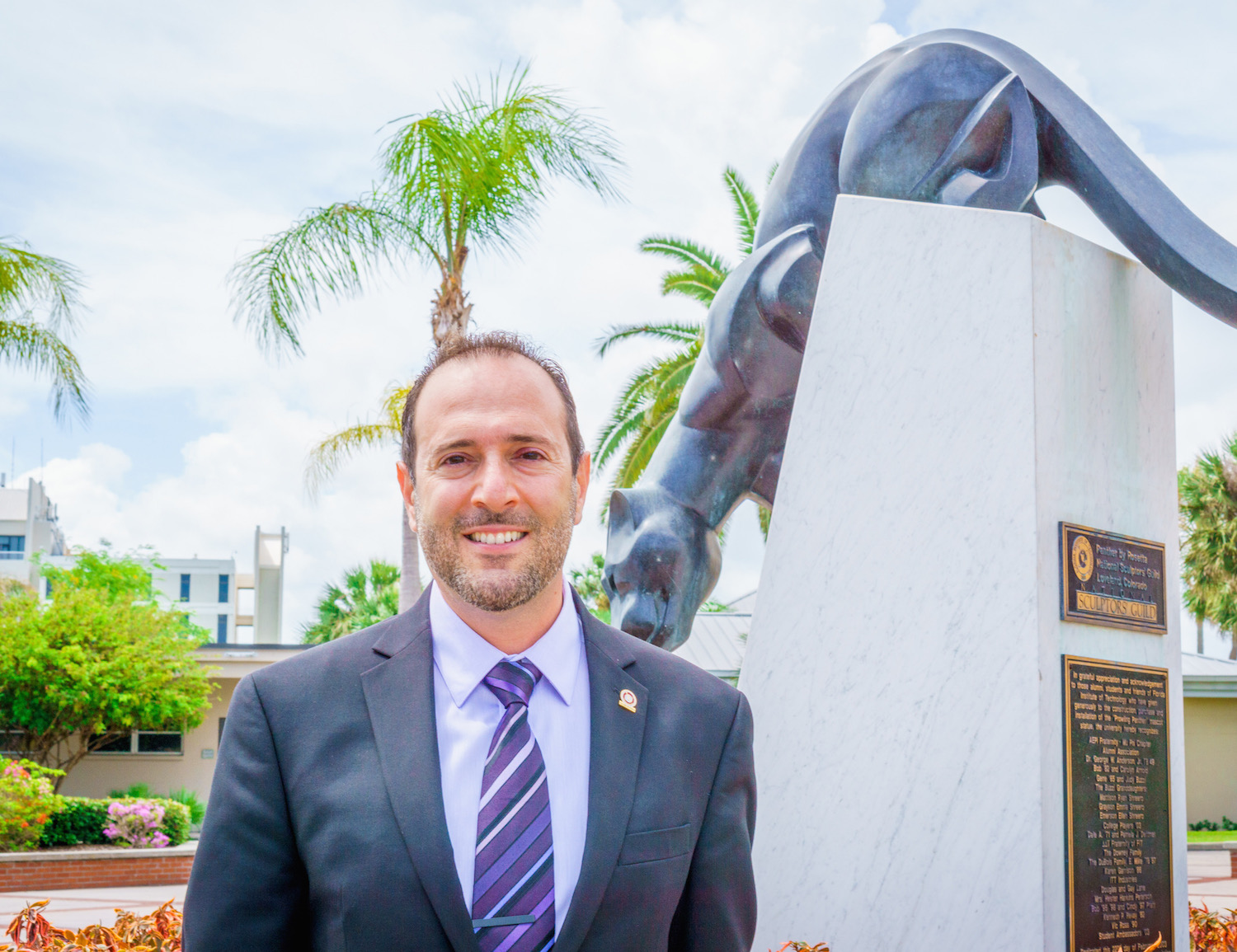
Nesnas, Nasri

Nasri Nesnas
Professor | Chemistry and Chemical Engineering
Contact Information
Educational Background
B.S. Manhattan college 1994
M.A. Columbia University 1995
M.Phil. Columbia University 1998
Ph.D. Columbia University 1999
Professional Experience
Professor of Chemistry, Florida Institute of Technology, 2017-Present
Visiting Guest Professor (Sabbatical Research), California Institute of Technology, 2014-2015
Associate Professor of Chemistry, Florida Institute of Technology, 2008-2017
Assistant Professor of Chemistry, Florida Institute of Technology, 2002-2008
Postdoctoral Fellow, Columbia University 1999-2002
Additional Duties
Biochemistry MS program director
Director of Mass Spec facility (DART and LC MS)
Undergraduate Advisor for Biochemistry (Chemistry concentration)
Graduate Advisor for non-thesis MS program
Current Courses
CHM 2001 Organic Chemistry 1
CHM 2002 Organic Chemistry 2
CHM 5201 Green Chemistry
CHM 5503 Organic Synthesis
CHM 5507 Natural Products Chemistry
CHM 5508 Bioorganic Chemistry
Recognition & Awards
Bronze Medal for Merit and Contribution to the Development of Palacky University Olomouc, Czech Republic
Gavel Award for Dedicated Service As Faculty Senate President 2020-2021
Charles E. Helmstetter Faculty Excellence Award in Research 2018-2019
Kerry Bruce Clark Faculty Excellence Award in Teaching 2016-2017
Research
(last updated January 2023)
1) Development of light triggered molecular tools to aid in understanding the brain's network
2) The Chemistry of Vision and light absorbing molecules
3) Catalysis of organic reactions
4) Cyclodextrins in food and drug delivery
5) Isolation and characterization of biologically active molecules
Nature is the single-best and most-omniscient source of information with which we can all be in touch. An improvement of our understanding of basic phenomena is a mere development of the medium by which we interact with nature.
Chemistry, one such medium, offers a wide variety of techniques through which we can essentially observe natural phenomena and thus learn firsthand lessons from nature.
We are interested in applying these lessons in the development of novel structures that have the ability to carry out a function of interest. Enzyme catalysis, which remains superior to any single organic reaction, in both rate and specificity, is the result of eons of irrational adaptation and evolution directed at achieving such a function. With modern tools, such as X-ray analysis, scientists have been able to 'view' the intricate details that such an adaptation has evolved into.
Biomimetic chemists take the many years of evolution and introduce them into a novel and rationally designed system that, in effect, mimics what nature strives to achieve. While nature has had billions of trials and errors over billions of years, we compete with several trials over perhaps several years, and still do well enough to achieve moderate rates and often quite decent selectivities. In one of our projects, we will combine the power of evolution along with human rational design in optimizing a receptor for a biologically active structure, via the irrational combinatorial approach of catalytic antibodies, and the rational design of an intricate catalytic moiety to perform the function of interest. For instance, cocaine addiction remains one of the most elusive dilemmas in drug therapy. This is because antagonists simply bind to the same dopamine transporter that cocaine binds to, thus rendering similar detrimental effects. A better and more promising approach will endeavor to chemically destroy cocaine via catalytic hydrolysis of one of its ester bonds. Therefore, cocaine will present an ideal candidate for the design of our catalytic system.
We are also interested in designing new catalytic reactions and applying them to the total synthesis of natural products.
We are currently carrying out the synthesis of the skeleton of an anticancer drug. Further modification of the side chains of these drugs will lead to optimized biological activity which will ultimately enhance their potential as therapeutic drugs.
One of the most fascinating and highly efficient systems in nature is vision. The high efficiency derives from the single photon of light that is sufficient in activating a thousand G-proteins, which in turn result in the hydrolysis of around 100,000 cGMP to GMP, ultimately leading to a neuronal signal. A study of these proteins through the design and synthesis of various visual chromophores will slowly unravel this intriguing design, eventually leading us in the direction of the design of similar systems geared to current needs, including therapeutic treatments.


 Give to Florida Tech
Give to Florida Tech